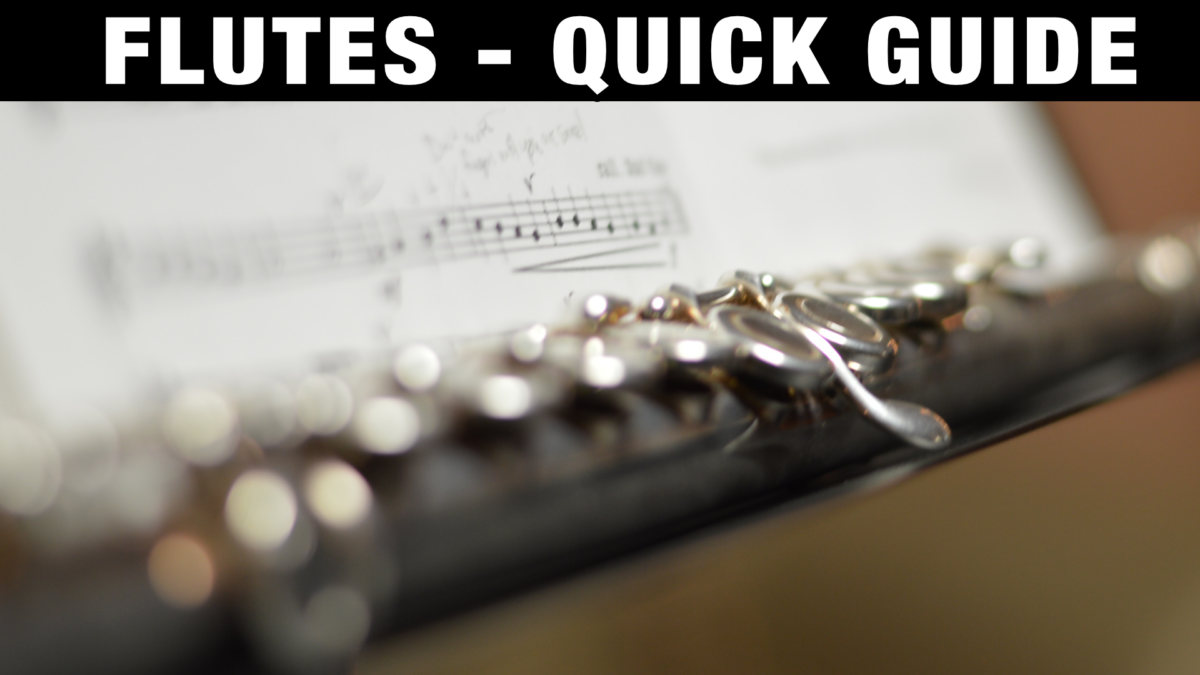 What types of flutes can you find in the orchestra?
What types of flutes can you find in the orchestra?
The flute family covers several ranges and tone colors, even though the most common by far is the standard concert flute.
They share the same type of design, with keys and holes to allow you to play the same fingerings regardless of the size of the flute.
Chart of the Flute Family in the Orchestra
Here are the flutes you find in the orchestra, with the corresponding lowest note of each flute.
- Piccolo Flute (D5)
- Concert Flute (C4)
- Alto Flute (G3)
- Bass Flute (C3)
- Contrabass Flute (C2)
Different types of Concert Flutes
The standard concert flute has historically been in C, but it has become common to include a B foot joint, meaning the lowest note is the B below middle C.
You can also choose between a keyed flute with closed holes (easier to play), or an open hole keyed flute where there are holes cut in the keys of the flute.
The holes allow you to perform more advanced techniques like bends and true legato. And some players prefer both the feeling when playing and the tonal character of open hole flutes.
Flutes can be made of different materials, such as pure silver, sometimes even gold. Student flutes are more commonly made of copper-nickel or brass, and then silver-plated.
Does your Flute use Treble Clef or Bass Clef?
The piccolo, concert flute, alto flute and bass flute actually all use the treble clef. Which means you only need to learn to read the treble clef and still be able to play all these types of flutes.
The reason is that the piccolo sounds 1 octave higher than written, and the bass flute sounds 1 octave lower than written. While the standard concert flute and alto flute both sits comfortably in the treble clef.
A contrabass flute can indeed also be written in the treble clef, and sounding 2 octaves lower, but some composers prefer to write it in the bass clef.

